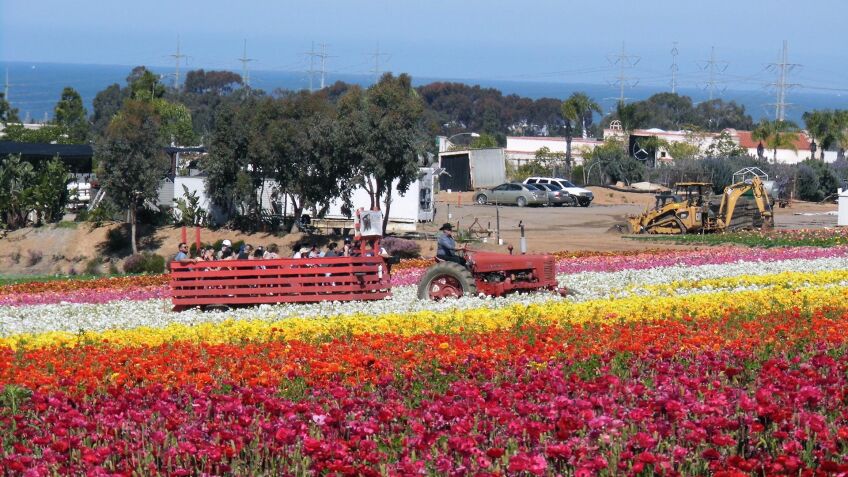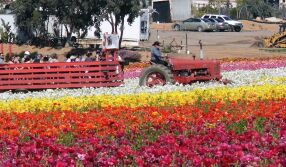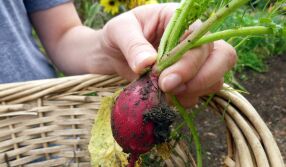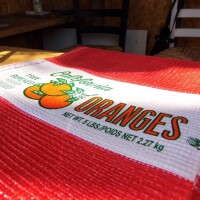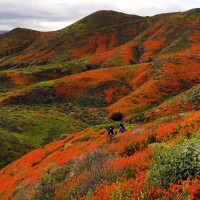Where to Experience Local Farming in SoCal

California is the top producing agricultural state in the country, providing almost all of the U.S. supply of certain nuts (almonds, walnuts, and pistachios) as well as tropical fruits (like kiwi and nectarines) and Mediterranean delights (olives, dates and figs).
Out of the top ten agricultural counties in the entire U.S., nine of them are in California.
And while the Central Valley is known as California’s “farm belt,” Southern Californians don’t need to eat behind a veil of anonymity.
Because while we may not be raking in the dough when it comes to commercial crops, we’ve got plenty of opportunity to meet your local farmers… and eat local.
Whether you’re a city mouse or a country mouse, here are five of the best ways to get a taste of local growing and farm history in SoCal.
1. Apricot Lane Farms, Moorpark
Apricot Lane Farms in Moorpark is probably a real-life version of the romanticized vision that most people have of farms, farmers and farming. Eight years of TLC and biodynamic agricultural practices have transformed a not-so-fertile plot of land into verdant wonderland. And so, what began as a lemon and avocado orchard and has evolved to produce 75 varieties of fruit – from autumn gold navel oranges, grapefruit, and kumquats to cherries, cherimoya, and tropic snow peaches.
At Apricot Lane, it's encouraging to see that the livestock are part of the overall ecosystem of the farm. The Dorper lambs and ewes graze the various pastures, with plenty of space to roam. All the while, they're fertilizing the soil with their poop. And fortunately, with 200-some-odd acres at their disposal, they've got plenty of pasture to choose from – without danger of overgrazing any of it. In their constant rotations, they graze a third of the grass, trample another third of it, and leave the final third behind as they move onto the next.
A flock of Khaki Campbell ducks also works hard, tasked with eating the snails that like to crawl up the tall stalks of grass and latch onto the low-hanging branches of the citrus trees. As well, a small herd of grass-fed Scottish Highland cattle does what cows do – graze and deposit manure, which the farm uses in its compost. Hens do fowl things – clucking and squawking and prancing about – under a shady tree next to a vegetable garden. Rhode Island Reds, Easter Eggers, Olive Eggers, Barred Plymouth Rocks, Blue Andalusians, Cream Legbars, Black Copper Marans and Cuckoo Marans snack on bugs and maggots, which apparently makes the antibiotic-free, soy-free, free-range eggs they lay even more delicious.
Occasional public tours of the farm are offered for a fee and by advance reservation. The farm also welcomes applications from volunteers to work in its garden – which is perhaps the most immersive way of experiencing farm life.
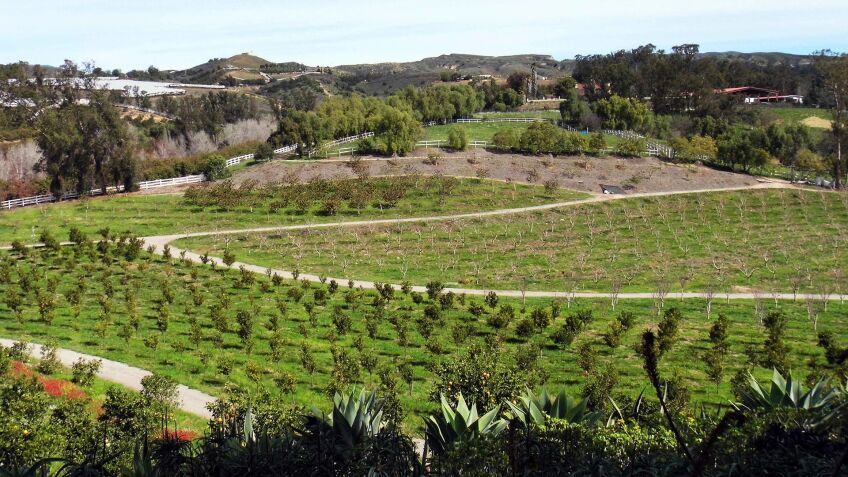

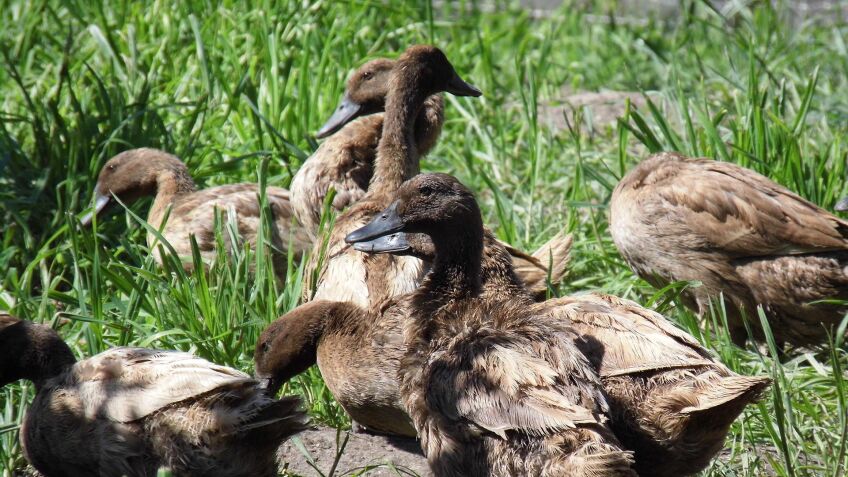
2. Ventura County Farm Day, various locations in Ventura County
Every year, for one day only in November, everything from berry fields to greenhouse farms and organic orchards throw open the gates and let the public in to tour, taste and explore how food is grown locally in communities like Oxnard, Camarillo, Ojai, Saticoy and Fillmore. Sponsored by SEEAG (Students for Eco-Education & Agriculture), Ventura County Farm Day is an agricultural festival on steroids – a one-day bonanza of produce, hayrides, free samples and demonstrations.
For instance, at Houweling’s Camarillo location, you can take an in-depth walking tour of its hydroponic tomato plants, which are grown in “glass houses” 52 weeks out of the year. Erected in 1996, the climate-controlled facility spans 125 acres and welcomes Southern California’s annual season of sunshine, which can top out at 300 days a year. You’ll also learn about the Houweling family of growers – including the original patriarch, Dutch horticulturist Cornelius Houweling, who founded the operation in British Columbia in 1956. And you can pick up a wider variety of tomatoes (one of Ventura County’s top crops) than you’ll ever find at your local grocer.
Laguna Farms’ Andrea Ranch in Oxnard offers a tractor tour through an organic raspberry ranch that grows its berries in containers rather than in the ground. An independent grower for Driscoll’s, it was established in 2000 and has grown to 500 acres under the leadership of grower Jose Martinez. Ventura County Farm Day provides a rare opportunity to meet Martinez himself and visit this normally off-limits property.
At McGrath Family Farm in Camarillo (which runs alongside the 101), you can discover a community-supported agricultural program that relies on its cooperative group of organic farmers who pool their resources in a shared space. The McGrath family has been farming since 1864 – and has occupied the SoCal coast for five generations of growers! While farm tours are available year-round by appointment and for a fee, Ventura County Farm Day is more of a casual, open house environment – and admission is free, as it is with all the dozens of other locations included in the itinerary.
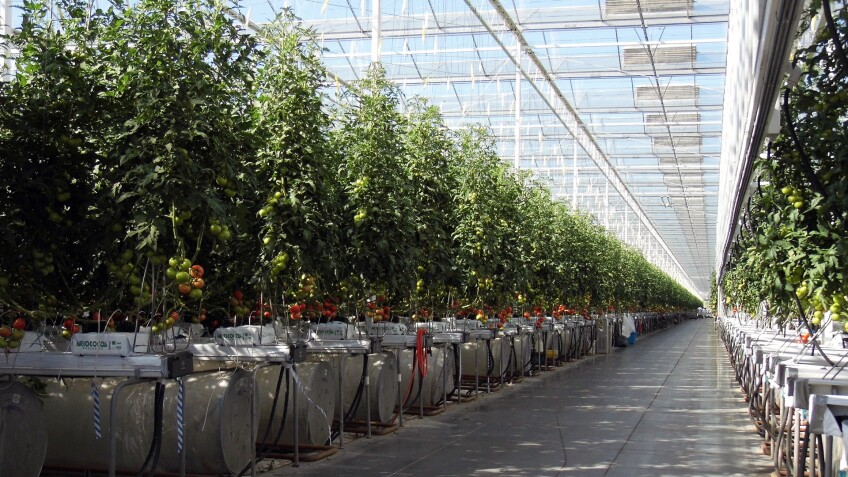
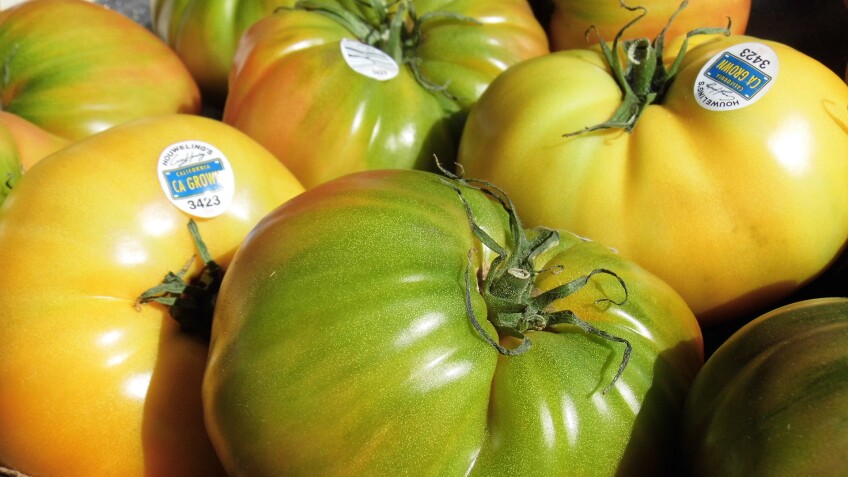
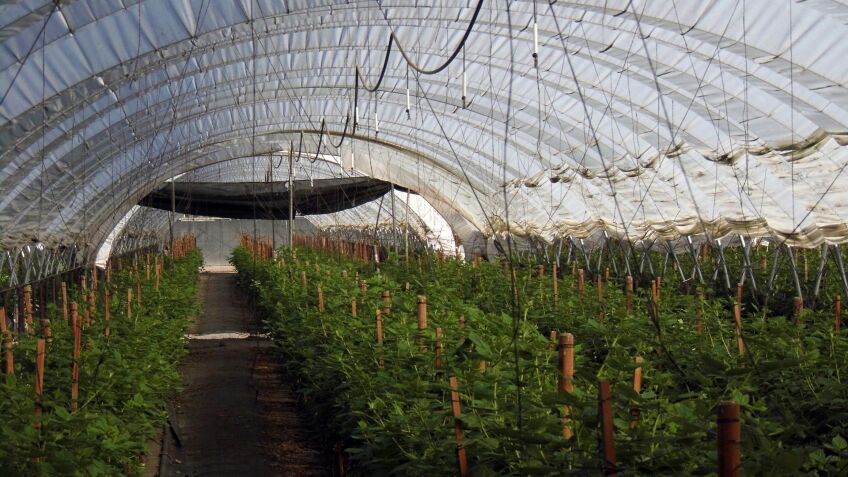

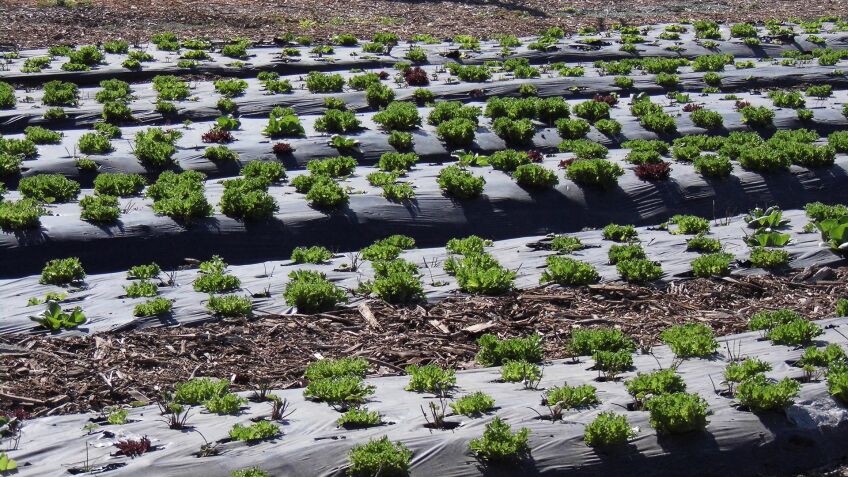
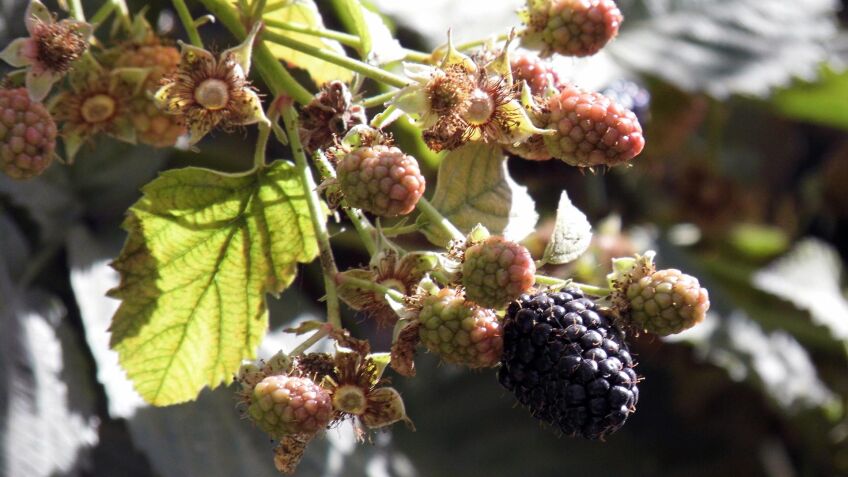
3. Santa Paula Agriculture Museum and Oxnard Farm Historic Park, Ventura County
An outpost of the Museum of Ventura County, the Agriculture Museum in Santa Paula is a destination for both historical exhibits on farming (and ranching) and also a window into the region’s current agricultural focus. Although lima beans are no longer the king of the coastal crops, there’s still plenty of citrus growing and packing that’s happening throughout Heritage Valley and beyond (especially with a behemoth like Limoneira still headquartered in Santa Paula).
Located in downtown Santa Paula in the restored Mill building (built 1888 as an agricultural warehouse), the “Ag” Museum displays antique farming equipment (plows, bean threshers and other tools) and other collectibles and ephemera (including historic photographs and even citrus crate labels). It also hosts a number of rotating exhibits whose topics range from local wildfires to agricultural architecture and farming techniques. While it’s open to the public every Wednesday through Sunday from 10:00 a.m. to 4:00 p.m., it’s also available for school tours and field trips.
About 12 miles (as the crow flies) closer to the Pacific Ocean, you’ll find the Oxnard Historic Farm Park – an outdoor cluster of historic buildings, farm equipment, and interpretive displays devoted to the agricultural history of the area. Located on the former site of the Gottfried Maulhardt/Albert Pfeiler Farm (a Ventura County landmark), it’s where you can find two of Oxnard’s oldest buildings: an historic house and a winery built by Maulhardt, both in the 1870s (with two small adjacent vineyards of white zinfandel vines from the 1880s). The property also houses an 1890s-era carriage house.
The park is open Tuesdays and Saturdays from 9:00 a.m. to 11:00 a.m., or by appointment. The site is usually also included as one of the stops on Ventura County Farm Day as well. When you visit, you might get to meet Oxnard Historic Farm Park Foundation director Jeff Maulhardt, a fifth-generation descendant of farmer Gottfried Maulhardt’s brother Jacob – and the living legacy of one of Oxnard’s founding families. Also a local historian and former history teacher, he’s authored over a dozen books on the region.

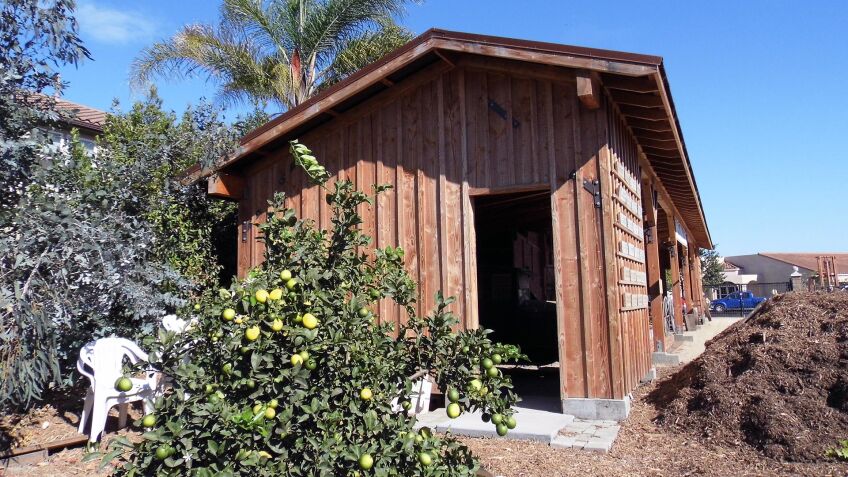

4. Earthworks Farm Community Garden, El Monte
Situated in what’s conventionally considered a “food desert,” Earthworks Farm & Community Garden is an agricultural oasis among fast food and freeways. And unlike some other urban gardens you might find crammed into the nooks and crannies of any other urban city, Earthworks has got sprawl on its side. Located under the shadow of the 60 freeway overpass, it’s got 5 acres for rogue gardening to transform into a full-fledged community endeavor and educational opportunity. And in conjunction with the San Gabriel Valley Conservation Corps, it’s narrowing the gap between farm and fork for more than just the privileged few.
Where the Rio Hondo and the San Gabriel rivers cross at Whittier Narrows Recreation Area – right between a Ramada Inn and a Burger King -- Earthworks Farm & Community Garden took over a vacant parcel of land that the U.S. Army Corps of Engineers had leased to L.A. County. Now, the farm produces a diverse array of crops – all available for the community to purchase via its Community Supported Agriculture (CSA). It’s an opportunity for city dwellers to both be local and buy local, but the focus here is really education.
Take a family-friendly harvest tour, and you’ll find yourself nibbling on any variety of greens (like dinosaur kale) and even citrus fruits as you stroll through the rows (and past the compost pile). A farmstand also offers produce for purchase – and you can drop by for a visit anytime from 8:00 a.m. to 1:00 p.m. Tuesday through Saturday. Earthworks’ outreach also extends out to local schools and community centers to pass along their knowledge of organic farming practices and, ideally, spread the trend.


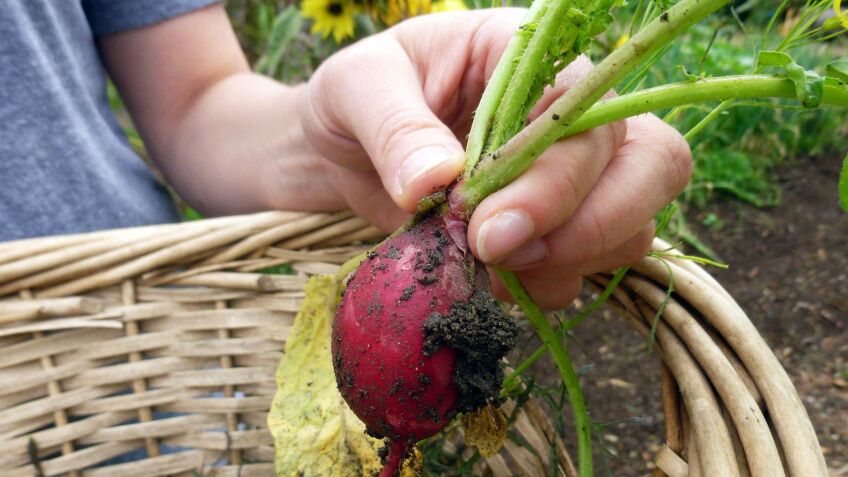
5. The Flower Fields, Carlsbad
You might’ve seen the iconic footage – a camera soars over the rainbow stripes of ranunculus blossoms in the cultivated “superbloom” of The Flower Fields. But it turns out that Carlsbad Ranch has begun to diversify its agricultural offerings beyond cut flowers (and Instagram-friendly photo shoots) – because the land owned by the Ecke family, descendants of the German immigrant known as the “King of the Poinsettia,” Paul Ecke, Sr., is now officially operating as a farm, too.
Take one of the wagon rides on a vintage tractor donated by The Antique Gas & Steam Engine Museum in Vista (and driven by museum volunteers), and you’ll get an up-close and overhead look at both the floral fields and the blueberry bushes, olive tree grove, and coffee plants that have taken over the top-left corner of the ranch (practically straight across Canon Road from the Carlsbad Strawberry Company’s U-pick fields).
You can also learn about water-wise farming from a demonstration station by the University of California Cooperative Extension, San Diego County, which showcases over 20 ways to help protect water resources on farms – and in your own yard or garden.
In its current location since 1965, The Flower Fields is notoriously open for a narrow seasonal window – usually early March through Mother’s Day (this year May 12). By then, most of the ranunculus blooms have already peaked, and the rising temperatures are sure to wither the rest quickly. The new food crops haven’t changed that yet – but then again, the coffee cherries need another year or two before their beans are ready to be roasted. Visit The Flower Fields in May, and you’ll catch the beginning of blueberry season and be able to buy some of the berries grown onsite. And you can pick strawberries nearby through July.

